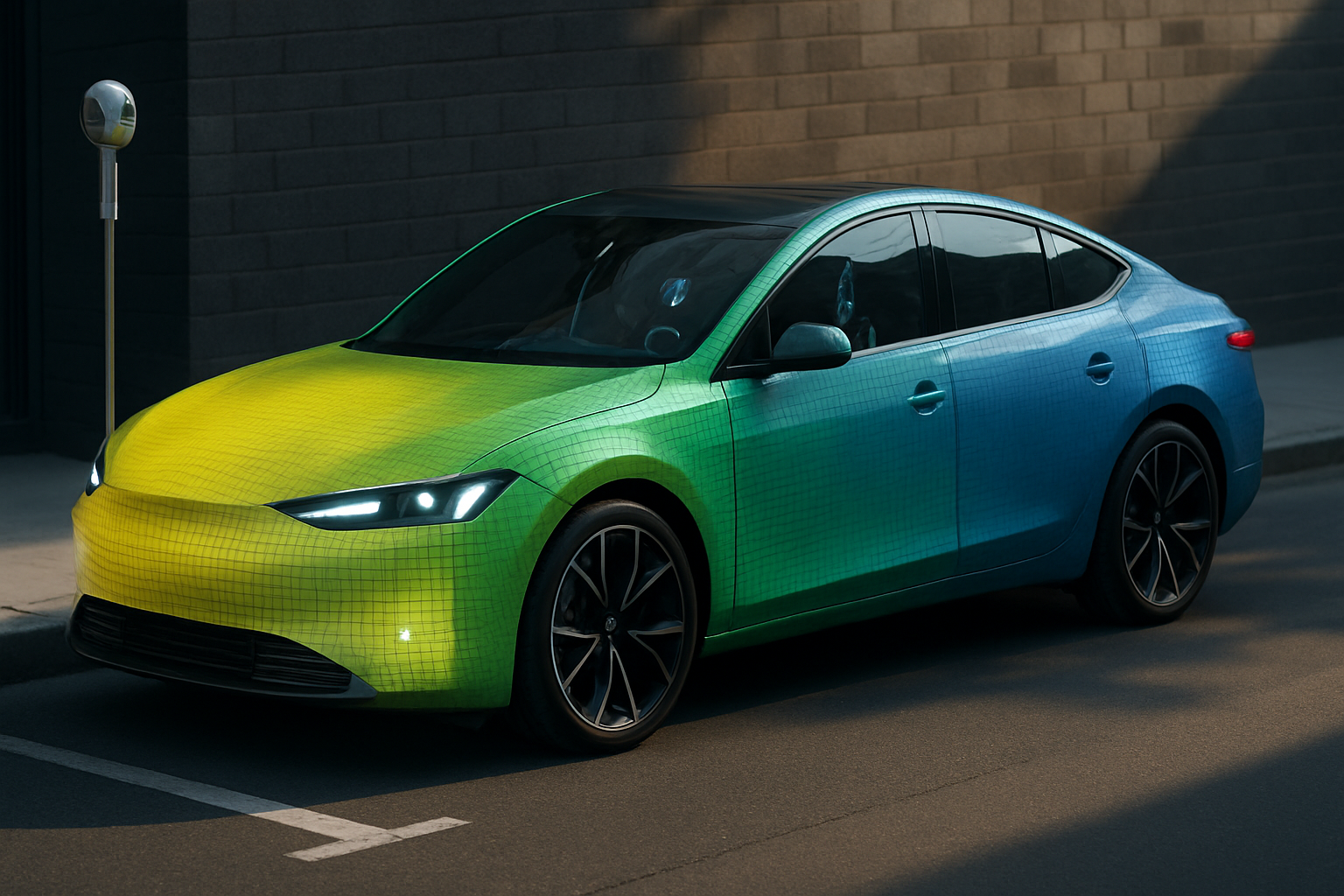Adaptive Camouflage: The Future of Automotive Stealth and Style
Imagine cruising down the highway in a car that seamlessly blends into its surroundings, shifting colors and patterns at will. This isn't science fiction, but the cutting-edge technology of adaptive camouflage in automotive design. As we delve into this revolutionary concept, we'll explore how it's set to transform not just the aesthetics of vehicles, but also their functionality and safety features.

Initially, the focus was on developing smart windows that could adjust their tint based on sunlight intensity. However, visionary automotive designers saw the potential for expanding this technology to entire vehicle exteriors. The challenge was to create a system that could rapidly change colors and patterns across a car’s entire surface while maintaining durability and cost-effectiveness.
How Adaptive Camouflage Works
At the heart of adaptive camouflage technology lies a sophisticated system of sensors, processors, and advanced materials. The exterior of the vehicle is covered with a specially designed film embedded with millions of microscopic color-changing pixels. These pixels are controlled by an onboard computer that processes data from various environmental sensors.
The system works by altering the electrical charge applied to different sections of the film, causing the pixels to change color. This allows for incredibly precise control over the vehicle’s appearance, enabling it to mimic its surroundings or display custom patterns and colors. The technology is so advanced that it can even create the illusion of transparency, making parts of the car seem to disappear into the background.
Practical Applications and Benefits
While the concept of a color-changing car might seem like a novelty, adaptive camouflage offers several practical benefits. One of the most significant advantages is in the realm of safety. By adapting to environmental conditions, vehicles can become more visible in low-light situations or blend in to avoid attracting unwanted attention in high-crime areas.
Moreover, this technology has the potential to revolutionize parking in urban environments. Imagine a car that can change its color to indicate whether it’s parked legally or not, or even display the remaining time on a parking meter. This could significantly reduce parking violations and streamline urban traffic management.
From a design perspective, adaptive camouflage opens up a world of possibilities. Car owners could change the color and pattern of their vehicles to suit their mood or the occasion, effectively having a new car every day. This customization extends beyond aesthetics, as the technology could be used to display important information such as battery life for electric vehicles or warning signals in emergency situations.
Environmental Impact and Energy Efficiency
One of the most intriguing aspects of adaptive camouflage is its potential impact on energy efficiency. By adjusting the color of a vehicle based on environmental conditions, it’s possible to significantly affect its heat absorption and reflection properties. For example, a car could switch to a lighter color in hot, sunny conditions to reflect more heat, reducing the load on the air conditioning system and improving fuel efficiency.
Furthermore, the ability to blend into surroundings could have a positive impact on wildlife. In areas where animals are sensitive to the presence of vehicles, cars equipped with adaptive camouflage could minimize their visual impact, reducing stress on local ecosystems.
Challenges and Future Developments
Despite its potential, adaptive camouflage technology faces several challenges before widespread adoption. Durability is a major concern, as the color-changing film must withstand harsh weather conditions, regular washing, and potential impacts. Researchers are working on developing more robust materials that can maintain their color-changing properties over the lifetime of a vehicle.
Cost is another significant hurdle. Currently, the technology is expensive to implement on a large scale, making it prohibitively costly for mass-market vehicles. However, as with many automotive innovations, economies of scale and continued research are expected to bring down costs over time.
Legal and regulatory issues also need to be addressed. Traffic laws in many countries specify certain color requirements for vehicles, and a car that can change colors at will could potentially violate these regulations. Lawmakers and automotive industry leaders will need to work together to create new guidelines that accommodate this emerging technology while ensuring road safety.
The Road Ahead for Adaptive Camouflage
As we look to the future, the potential applications of adaptive camouflage in the automotive industry are boundless. Beyond personal vehicles, this technology could revolutionize public transportation, emergency services, and military applications. Imagine buses that change color to indicate their route, ambulances that can make themselves more visible in traffic, or military vehicles that can truly disappear into their surroundings.
The integration of adaptive camouflage with other emerging technologies, such as augmented reality and advanced AI, could lead to even more innovative applications. We might see cars that can display real-time traffic information on their exterior or adapt their appearance based on the driver’s biometric data.
As this technology continues to evolve, it promises to transform not just how our cars look, but how they interact with us and the environment around them. Adaptive camouflage represents a convergence of art, science, and engineering that could redefine our relationship with vehicles and push the boundaries of automotive design into exciting new territories.





